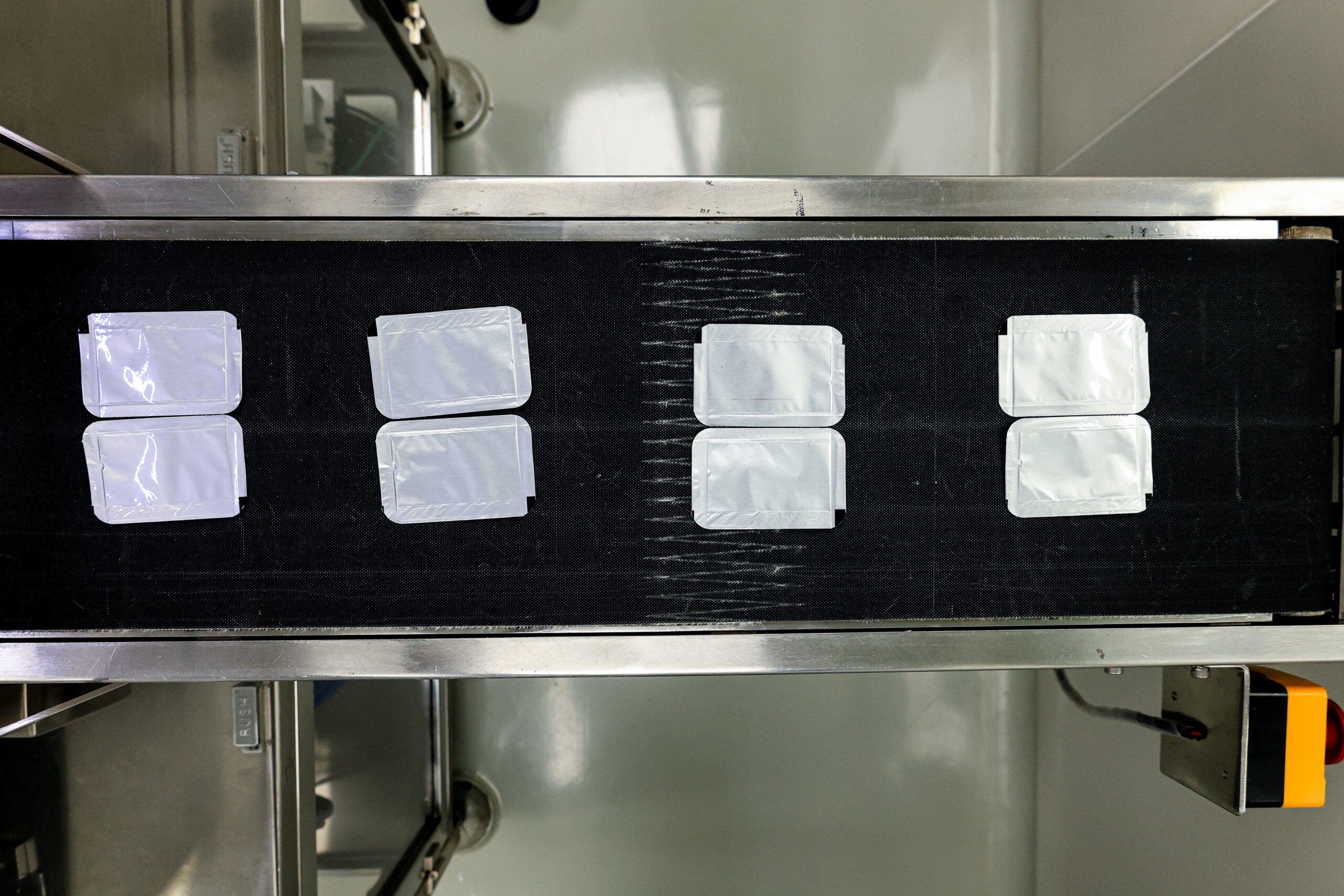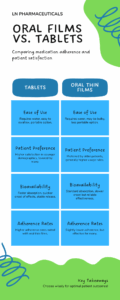
Oral Thin Films vs. Tablets: Which Is Better for Medication Adherence?
When comparing oral thin films (OTFs) and tablets , medication adherence is a critical factor that influences treatment outcomes, especially for patients with chronic conditions such as hypertension, diabetes, schizophrenia, or Parkinson’s disease. Below is a detailed comparison of these two dosage forms in terms of ease of use, patient preferences, clinical evidence, and impact on adherence , based on current research and market trends.

🔍 1. Ease of Use and Administration
Insight: OTFs eliminate the need for water and are ideal for patients with dysphagia or those who find swallowing pills difficult, such as children, the elderly, or psychiatric patients.

📊 2. Patient Preferences and Satisfaction
- Clinical studies show high patient satisfaction with OTFs , particularly among:
- Pediatric populations
- Geriatric patients
- Patients with neurological or psychiatric disorders
- A 2021 study evaluating CUREfilm OTF showed:
- 90% of users rated the experience as “very pleasant” or neutral
- No reported pain, numbness, or irritation
- In contrast, up to 50% of patients with chronic diseases report difficulty adhering to tablet-based regimens due to swallowing issues or complex dosing schedules .
Insight: Patient-reported outcomes consistently favor OTFs for comfort, convenience, and ease of use , directly contributing to better adherence.
🧪 3. Therapeutic Efficacy and Bioavailability
Example: KYNMOBI® (apomorphine HCl), a sublingual film for Parkinson’s OFF episodes , delivers rapid symptom relief by entering systemic circulation directly via the oral mucosa.
Insight: OTFs offer faster onset of action and improved bioavailability , making them suitable for acute or breakthrough symptoms where timing is critical.
📈 4. Adherence Rates in Clinical Practice
- Non-adherence to medication affects ~50% of patients with chronic illnesses , leading to poor outcomes and increased healthcare costs.
- Studies suggest that switching from tablets to OTFs improves adherence rates by up to 20–30% , especially in:
- Psychiatry (e.g., schizophrenia, bipolar disorder)
- Neurology (e.g., Parkinson’s disease)
- Pain management
- For example, IGALMI , a sublingual film approved in 2022 for acute agitation in schizophrenia , has shown improved compliance due to its non-invasive administration and rapid effect .
Insight: OTFs reduce barriers like fear of swallowing, dosing complexity, and stigma, thereby enhancing real-world medication adherence .
🏛️ 5. Regulatory and Market Trends
Trend Insight: The global OTF market is expected to grow at a CAGR of 8–12% , driven by demand for patient-centric formulations and advanced delivery systems .
🧩 6. Limitations and Considerations
Conclusion: While OTFs offer significant advantages in adherence and patient experience , they may not be suitable for high-dose drugs or resource-limited settings due to cost and stability concerns .
✅ Final Verdict: Which Is Better for Medication Adherence?
Bottom Line:
For most patients , especially those with difficulty swallowing, mental health conditions, or requiring rapid drug onset , oral thin films outperform tablets in improving medication adherence.
However, tablets remain the preferred option for high-dose medications, cost-sensitive environments, and long-term chronic therapies where adherence challenges are less pronounced.
📌 Recommendations for Healthcare Providers
- Prescribe OTFs for:
- Patients with dysphagia
- Pediatric or geriatric populations
- Psychiatric or neurologic patients
- Acute symptom management (e.g., breakthrough pain, agitation)
- Use tablets when:
- Dosing requirements exceed OTF capacity
- Cost is a major concern
- Long-term therapy with proven adherence exists
